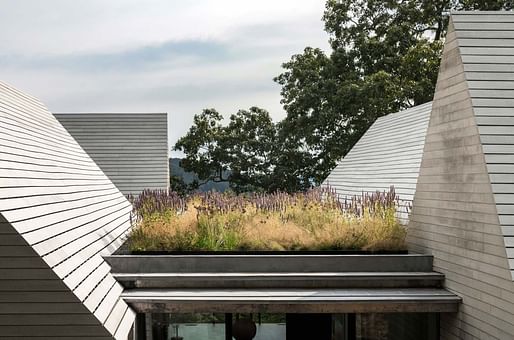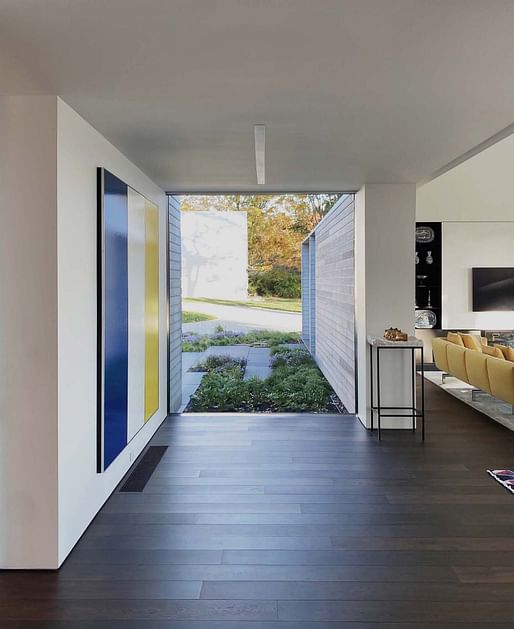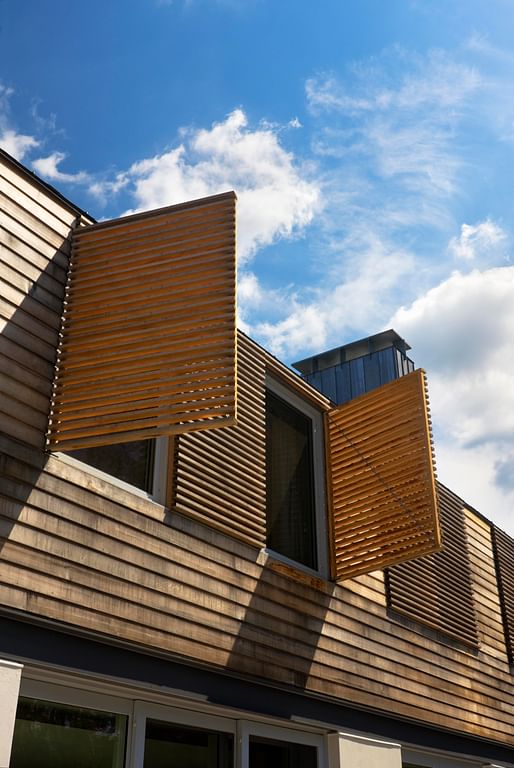
Following last week’s visit to New York-based Resolution: 4 Architecture, we are moving our Meet Your Next Employer series to Connecticut this week to explore the work of Joeb Moore & Partners.
From their studio in Greenwich, the firm has built a portfolio grounded in “intellect in design, craftsmanship, and inventive building systems and details.” The studio describes its underlying thesis as being that architecture should “deepen human experience, engages our prosaic rituals, while also elevating our awareness of a larger, changing world.”
Over on Archinect Jobs, the firm is currently hiring an Architect/Designer with 5+ years of experience to join their team. For candidates interested in applying for the position, or anybody interested in learning more about the studio’s work, we have rounded up five bespoke residential projects by Joeb Moore & Partners that demonstrate their design approach.

Located in northwestern Connecticut, HILL House occupies a naturally terraced site, shielded from view from the country drive by a forest grove of specimen trees. Four gabled primitive building forms are nestled into the rock outcrop between the upper wooded entry drive and the rolling meadow below. The scheme’s geometry originates from the site’s farm-land history, with familiar forms entirely clad in wood.

Inside, the house is anchored by a central gallery that serves as a meditative room and gallery for the owner’s collection of art. Each of the four building forms interacts with the central gallery and is also oriented to engage with the surrounding natural landscape. The fifth structure, which accommodates the garage and studio, is directed towards the eastern boundary of the property and creates a private entry courtyard.

SLICE House is positioned on a Fairfield County site, characterized by glacial till and bedrock. The volume is carefully situated to accommodate existing rock formations and trees on the property. The scheme’s T-shaped design delineates three separate outdoor areas: an entry court in the north, a pool and entertainment terrace nestled between the house and an elevated knoll to the east, and a tiered dining terrace to the west, overlooking a reservoir and situated above a rocky incline.

The house is divided into three wings, designated for formal living, informal living, and utility spaces, all grounded to the site by a masonry wall. The interstitial space between the three wings harnesses light and reflection to establish vertical connections between each level of the house and lateral connections to each wing and the surrounding landscape. Openings or "slices" are strategically placed to emphasize the transition between the three wings. Reflective metal panels line the windows and other openings, directing light and views of the landscape into the interior, while also reflecting the changing conditions of the surrounding environment on the building's facade.

Situated in New England along the southern Long Island Sound, the T(EA) House is part of a historic neighborhood originally filled with summer homes from the early 20th century, now primarily comprised of private, single-family residences. The scheme consists of three Alaskan yellow cedar lattice "boxes" suspended above discontinuous concrete, stucco, and glass walls on the ground level. The "boxes" house the sleeping areas and rooftop gardens, while a floor-to-ceiling glass curtain wall defines the open living/dining area and its accompanying outdoor pergolas and orchard pool garden areas.

The house can be accessed via a long pathway from both the east and west streets, forming the fundamental layout of the house. The indoor domestic spaces are organized along the northern side of the property, while the gardens occupy the southern side. At the intersection of these axes in the property's center, the "T"-shaped plan of the house emerges, housing a central staircase extending up to the rooftop gardens and studio, from which a panoramic 270-degree view of Long Island Sound and the distant New York City skyline is established.

Located along the Connecticut shoreline of Long Island Sound, the Spiral House is designed to interact with and amplify the coastal environment and its atmospheric elements of light, air, and water. The design of the house is both a straightforward and practical reaction to stringent environmental and local zoning regulations, creating an interplay between two geometric systems — one being projective and the other radial.

The selection of materials included cedar wood siding in reference to the area’s cedar wood shingle and clapboard houses, expansive panel glass windows and doors to provide views of the Long Island Sound, and durable concrete to withstand New England's coastal storm surges. The combination of the spiral wood structure with its vertical wood-fin skin, set against the concrete base and ramp, along with the 11-foot tall transparent/reflective glass curtain wall system, results in a range of changing visual effects.

The 44PL residence is nestled in Greenwich, Connecticut's backcountry, on a four-acre site characterized by steep slopes. The scheme is imagined as a sequence of concrete retaining walls and escarpments that traverse and flow down the sharply inclined site. The main structure comprises a pair of smooth, extruded volumes of varying lengths resting upon and secured to the concrete site walls. The first extrusion presents a gable-front facade to the street, hiding the overall scale of the house, while the second, rotated 90 degrees, aligns parallel to the street and site walls.

Above, two cedar volumes are intersected by three sectional cuts. The primary sectional void is a water canal with a waterfall cascading between two concrete site walls, dropping 12 feet to the basement, thereby filling the house's "center" with reflective light, water, and sound. The second void is the "gable-front" facade itself, detached from the main building to form a light lantern. The third void is a vertical slot that functions as a rear staircase running from the basement to the second floor, separating the garage and guest suite from the children's bedroom wing.

Meet Your Next Employer is one of a number of ongoing weekly series showcasing the opportunities available on our industry-leading job board. Our Job Highlights series looks at intriguing and topical employment opportunities currently available on Archinect Jobs, while our weekly roundups curate job opportunities by location, career level, and job description.
No Comments
Block this user
Are you sure you want to block this user and hide all related comments throughout the site?
Archinect
This is your first comment on Archinect. Your comment will be visible once approved.